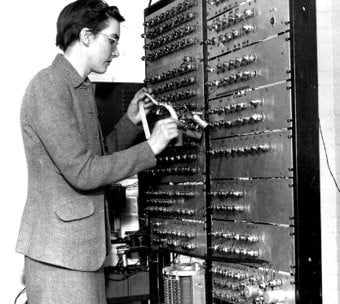Phillip Don Estridge
Birth: June 23rd, 1937
Death: August 2, 1985
Major Academic Events: He completed a bachelor's degree in electrical engineering at the University of Florida and worked at the Army, designing a radar system using computers, IBM and finally NASA's Goddard Space Flight Center until he moved to Boca Raton, Florida, in 1969. His decisions had a significant impact on the computer industry, leading to a significant increase in the sales and purchases of personal computers and the emergence of a whole sector of companies producing IBM PC hardware.
Contributions to Computer Science: he began making efforts to create the IBM PC. His goal was to create a low-cost personal computer to compete against the rising popularity of products from companies like Apple Computer, Commodore International, and other perceived IBM rivals.
Sources: Philip D. Estridge. IBM Archives: Philip D. Estridge. (n.d.). Retrieved February 13, 2023, https://www.ibm.com/ibm/history/exhibits/builders/builders_estridge.html
Sanger, D. E. (1985, August 5). Guided IBM Personal Computer. The New York Times. Retrieved February 13, 2023, from https://www.nytimes.com/1985/08/05/us/philip-estridge-dies-in-jet-crash-guided-ibm-personal-computer.html
Kathleen Booth
Birth: July 9th, 1922
Death: September 29th,2022
Major Academic Events: He received his Bachelor of Science in Mathematics and Physics in 1964 at Beloit College and the first African-American to receive his Doctorate in Computer Science in 1969 at University of Illinois
Contributions to Computer Science: He helped create the techniques that are currently used to do real-time collaboration editing of the same documents while he lead a Groupware Research Group at the Microelectronics and Computer Technology Corporation (MCC). At the Palo Alto Research Center (PARC), he worked with a group that helped invent the idea of clicking on icons to load certain computer programs to make computers more user-friendly and how to communicate through long distances.
Sources: Moone, T. (2014, May 22). Welcome to the Illinois Computer Science Department homepage! Retrieved July 22, 2019, from https://cs.illinois.edu/news/memory-clarence-skip-ellis-1943-2014
Dr Williams, S. (1997, May 25). Computer Scientists of the African Diaspora: Skip (Clarence A.) Ellis. Retrieved July 23, 2019, from http://www.math.buffalo.edu/mad/computer-science/ellis_clarencea.html
"Ellis, Clarence A. 1943–." Contemporary Black Biography. . Retrieved July 23, 2019 from Encyclopedia.com: https://www.encyclopedia.com/education/news-wires-white-papers-and-books/ellis-clarence-1943
Carl Sassenrath
Birth: Jan 1, 1957
Major Academic Events: He received his Bachelor of Science in Electrical Engineering and Computer Science in 1980 at University of California
Contributions to Computer Science: He was the creator of the multi-tasking ability for computers (being able to do multiple programs at once) in 1985 when he joined Hewlett Packard's Computer Systems Division. He also collaborated in building some of the first Operating Systems and created his own programming language called REBOL (Relative Expression-Based Object Language).
Sources: “Carl Sassenrath - Architect of Operating Systems and Languages.†Carl Sassenrath - Architect of Operating Systems and Languages, https://sassenrath.com/.
Mr. Carl Sassenrath. (2017, August 20). Retrieved July 22, 2019, from https://www.ithistory.org/honor-roll/mr-carl-sassenrath
Carl Sassenrath - History. (2018). Retrieved July 23, 2019, from http://www.rebol.com/bio-carl.html


